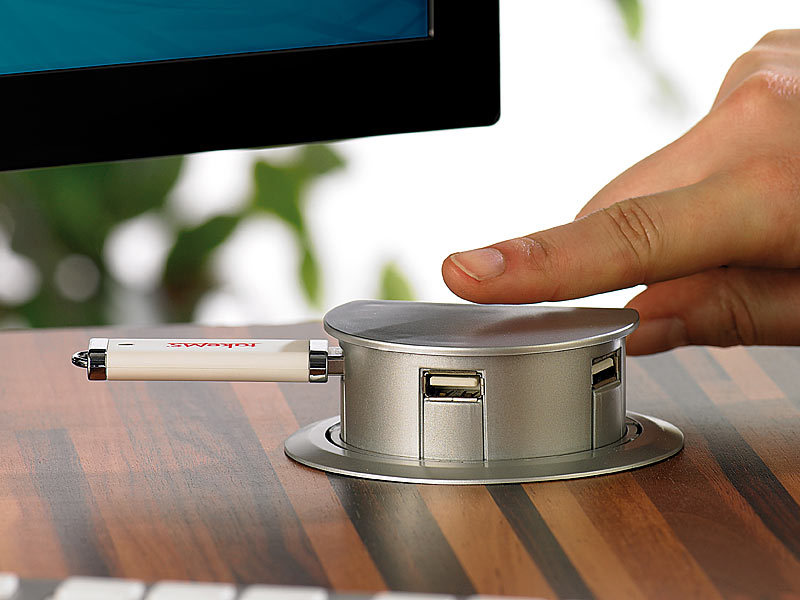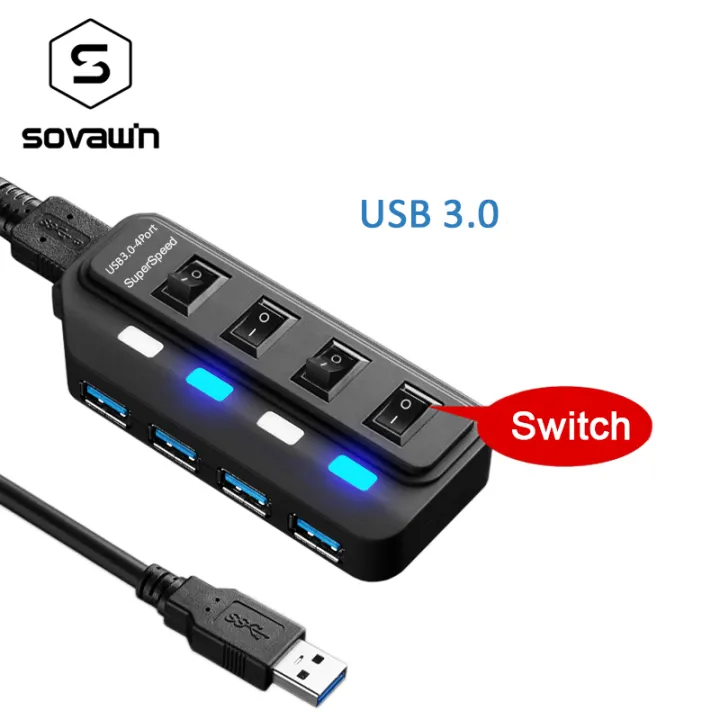- The USB 2.0 Hub adds four additional USB ports to your Mac (or PC), allowing you to connect USB devices such as digital cameras, phones, external hard drives, flash drives, and printers to one convenient place. Its sleek aluminum design with shielded white cable is the perfect complement to your Apple computer and products.
- Anker 4-Port Ultra-Slim Data USB 3.0 Hub with 2ft Extended Cable for Mac Pro HDD 5 out of 5 stars (177) 177 product ratings - Anker 4-Port Ultra-Slim Data USB 3.0 Hub with 2ft Extended Cable for Mac Pro HDD.
- Belkin's USB 3.0 4-Port Hub and USB-C cable let you continue to use your existing USB 3.0 peripherals with your new Mac. Four devices attached to the hub's powered USB 3.0 ports can connect neatly via a single cable to one USB-C port on your Mac, allowing fast, effortless charging and data transfer.
Information about these and other types of Mac ports is in the specifications for your Mac: Choose Apple menu > About This Mac, click Support, then click Specifications. Or check your Mac user guide.
Thunderbolt 3
The AH430 aluminum hub works very well with my 2012 iMac running OS X 10.9.3 Mavericks. When both USB 2 & USB 3 devices are plugged into the hub, it will appear in the System Information app as two hubs, one on a 'USB 3.0 SuperSpeed Bus' with the USB 3 items attached to it, & the other on a 'USB Hi-Speed Bus' with the USB 2 items attached to that. LENTION USB C Hub with 3 USB 3.0 and SD/Micro SD Card Reader Compatible 2020-2016 MacBook Pro 13/15/16, New Mac Air/iPad Pro/Surface, ChromeBook, More, Multi-Port Type C Adapter (CB-C15, Space Gray) 4.4 out of 5 stars 1,978.
4 Port Usb Hub For Mac
Use Thunderbolt 3 with displays and other devices that connect using either a Thunderbolt 3 cable or USB-C cable. You can also connect a USB-C power adapter and cable to charge your notebook computer. If you have a device that doesn't connect to this port, you might be able to use an adapter to connect it.

These Mac models have Thunderbolt 3 ports:
- MacBook Pro introduced in 2016 or later
- MacBook Air introduced in 2018 or later
- iMac introduced in 2017 or later
- iMac Pro (all models)
- Mac mini introduced in 2018
- Mac Pro introduced in 2019
If your Mac notebook or desktop computer has more than one port like this, each port supports ThunderBolt 3 and USB-C.
USB-C


Use USB-C with displays and other devices that connect using a USB-C cable. You can also connect a USB-C power adapter and cable to charge your notebook computer. If you have a device that doesn't connect to this port, you might be able to use an adapter to connect it.
MacBook models introduced in 2015 or later have a single USB-C port. This port doesn't support Thunderbolt devices.
If your Mac has only one port like this, it's a MacBook that supports USB-C but not Thunderbolt.
Thunderbolt
Use Thunderbolt or Thunderbolt 2 with displays and other devices that connect using a Thunderbolt cable.
These Mac models have Thunderbolt or Thunderbolt 2 ports:
- MacBook Pro introduced in 2011 through 2015
- MacBook Air introduced in 2011 through 2017
- Mac mini introduced in 2011 through 2014
- iMac introduced in 2011 through 2015
- Mac Pro introduced in 2013

Thunderbolt and Thunderbolt 2 are not the same as Mini DisplayPort . They have the same shape, but use different symbols on the cable and port. However, this port does support Mini DisplayPort for video output, so you can use a Mini DisplayPort cable to connect a Mini DisplayPort display.

These Mac models have Thunderbolt 3 ports:
- MacBook Pro introduced in 2016 or later
- MacBook Air introduced in 2018 or later
- iMac introduced in 2017 or later
- iMac Pro (all models)
- Mac mini introduced in 2018
- Mac Pro introduced in 2019
If your Mac notebook or desktop computer has more than one port like this, each port supports ThunderBolt 3 and USB-C.
USB-C
Use USB-C with displays and other devices that connect using a USB-C cable. You can also connect a USB-C power adapter and cable to charge your notebook computer. If you have a device that doesn't connect to this port, you might be able to use an adapter to connect it.
MacBook models introduced in 2015 or later have a single USB-C port. This port doesn't support Thunderbolt devices.
If your Mac has only one port like this, it's a MacBook that supports USB-C but not Thunderbolt.
Thunderbolt
Use Thunderbolt or Thunderbolt 2 with displays and other devices that connect using a Thunderbolt cable.
These Mac models have Thunderbolt or Thunderbolt 2 ports:
- MacBook Pro introduced in 2011 through 2015
- MacBook Air introduced in 2011 through 2017
- Mac mini introduced in 2011 through 2014
- iMac introduced in 2011 through 2015
- Mac Pro introduced in 2013
Thunderbolt and Thunderbolt 2 are not the same as Mini DisplayPort . They have the same shape, but use different symbols on the cable and port. However, this port does support Mini DisplayPort for video output, so you can use a Mini DisplayPort cable to connect a Mini DisplayPort display.
Mini DisplayPort
Asus sync for pc windows 10. Use Mini DisplayPort with displays that connect using a Mini DisplayPort cable.
These Mac models have Mini DisplayPort:
- MacBook Pro introduced in late 2008 through 2010
- MacBook Air introduced in late 2008 through 2010
- Mac mini introduced in 2009 and 2010
- iMac introduced in 2009 and 2010
- Mac Pro introduced in 2009 through 2012
Mini DisplayPort is not the same as Thunderbolt or Thunderbolt 2 . They have the same shape, but use different symbols on the cable and port.
USB-A
Use USB-A with devices that connect using a USB cable. USB ports are sometimes known by the USB specification of the port, such as USB 2 or USB 3.
Left to right: power, two Thunderbolt, USB-A, and Audio-Out.
HDMI
Use HDMI with displays and TVs that connect using an HDMI cable.
Usb Hub For Mac Pro
Ethernet
Use Ethernet with networks and devices that connect using an Ethernet (RJ45) cable.
FireWire
Use FireWire with devices that connect using a FireWire 400 or FireWire 800 cable.
SD card
Use the SD card slot with SD, SDHC, SDXC, MMC, and UHS-II media cards, such as those used by digital cameras.
Audio
Use Audio-Out — or — with headphones, speakers, and other audio-output devices that connect using an audio cable that has a 3.5 mm (1/8 inch) audio jack.
This makes the operating system secure by enforcing all the malicious elements to become inactive and sit idle even if they are copied to your Mac erroneously.Keeping all the possible threats and their prevention measures in mind, Apple makes connecting GoPro to Mac a bit more demanding than merely plugging it to a USB port and browsing through its memory to access photos and videos.That said, below are the three simple methods that guide you through the process on how to connect GoPro to Mac and access its media file without any hassle.Part 1. How to Connect GoPro to Mac via Image CaptureImage Capture is a built-in app in macOS that automatically detects a connected scanner or camera when launched. Gopro quick for mac.
Use Audio-In with a microphone or other audio-input device that connects using an audio cable that has a 3.5 mm (1/8 inch) audio jack.
Power
Use the power port , if available, to connect your computer to AC power using a MagSafe cable or adapter. This port isn't available on newer Mac notebook computers, which use Thunderbolt 3 or USB-C for power and charging. Learn more about power adapters and cables for Mac notebook computers.
